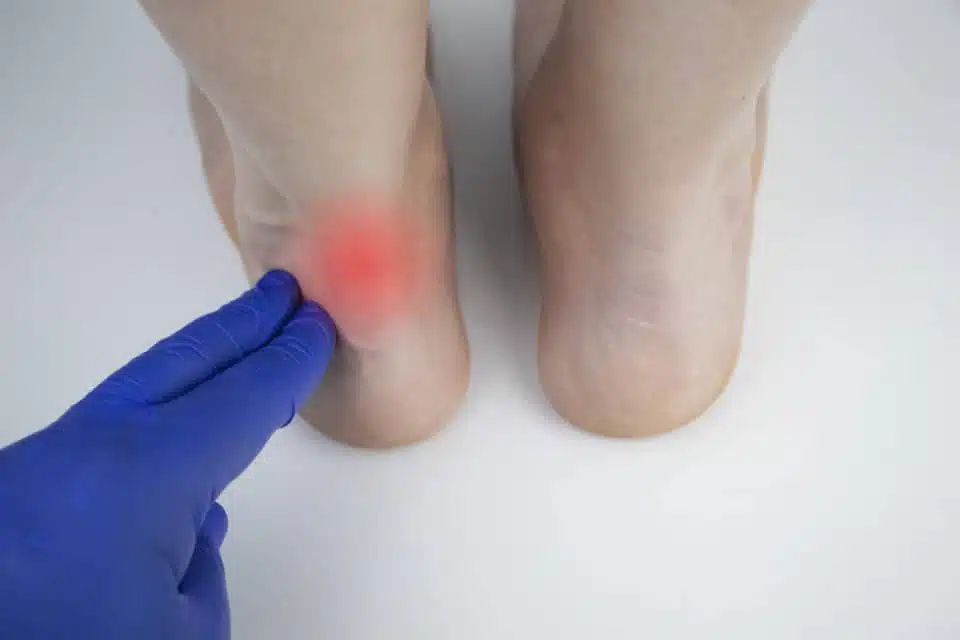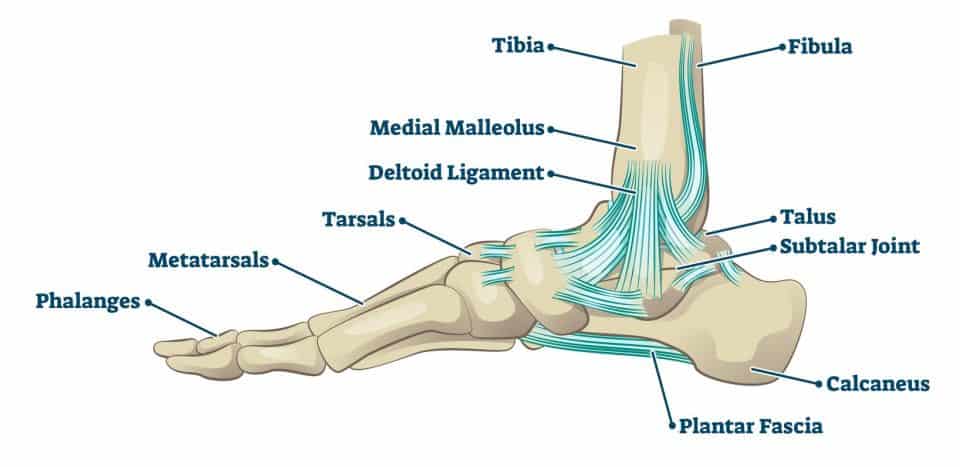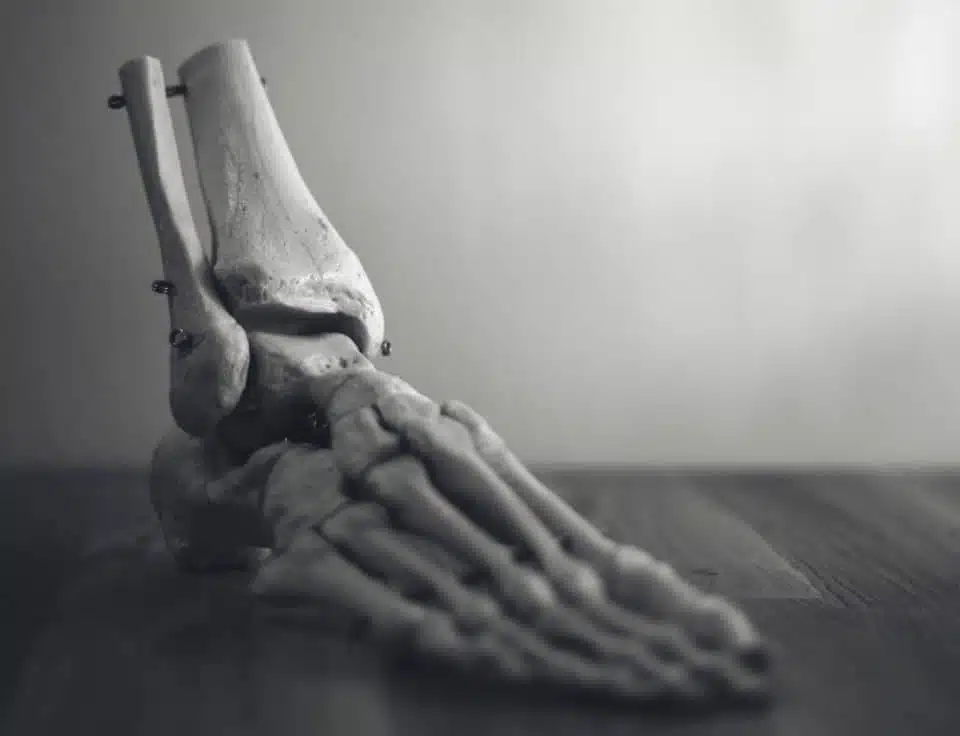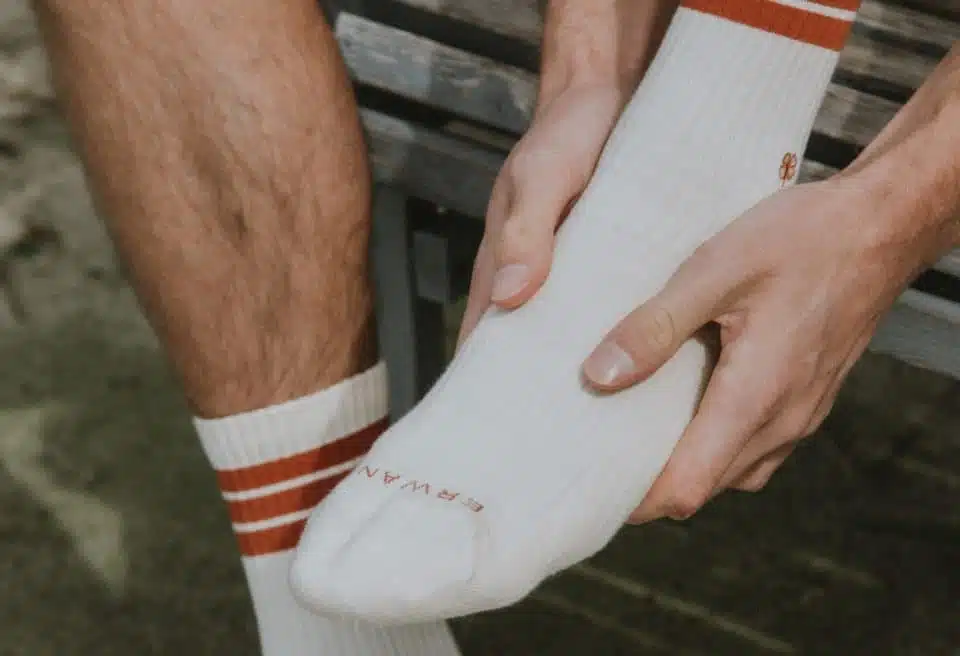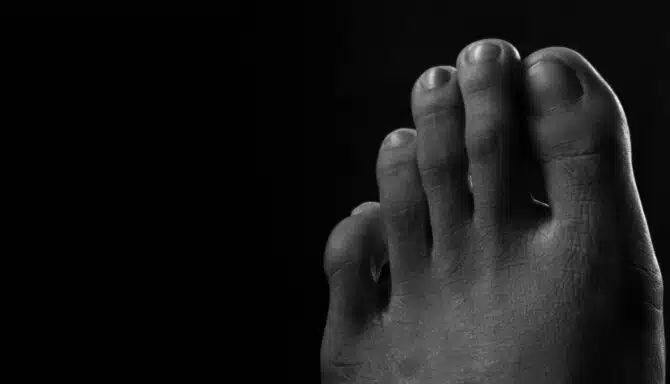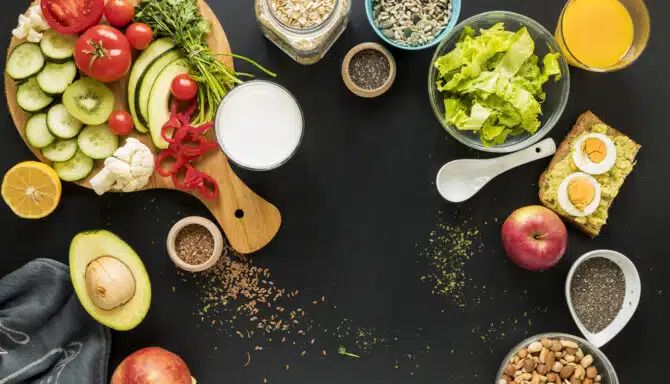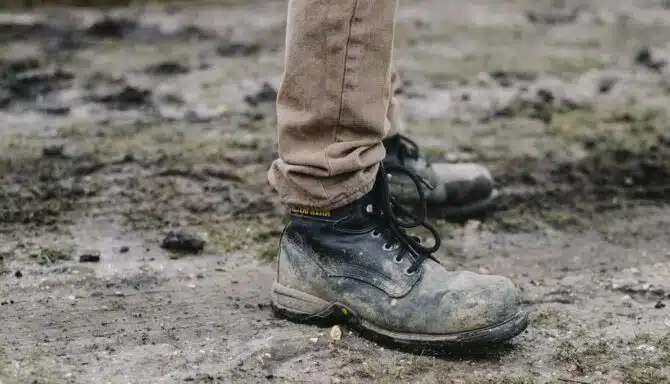The ankle is one of the most critical areas of the body. It connects your feet with your lower leg and knee, and bears much of your weight with each step. Injuries to the ankle are quite common, and ankle sprains are one of the most common foot conditions. All it takes is a misstep to injure your ankle. But don’t panic!
To understand ankle injuries, it’s important to understand the anatomy of your ankle. An “ankle” is not technically a bone or muscle. Actually, the ankle is the joint where the leg meets the foot, and encompasses bone, ligaments and muscles that cross the joint. These bones are the:
- Tibia: The tibia is commonly referred to as the shin bone. It’s the largest and strongest bone below your knee. It is weight-bearing and is the most important bone in the lower leg. It’s prone to weight-bearing injuries like strains, sprains, and fractures. We’ll get into that shortly!
- Fibula: The fibula is unique among ankle bones. It does not carry significant weight. Its function is to provide joint stability. This is important as the fibula is prone to acute injuries more than chronic ones.
- Talus: The talus is the part of your ankle in the foot itself. The talus is critical as it transfers weight between your foot and the lower leg.
What are the types of ankle injuries?
Ankle injuries are a description of various types of foot conditions. Ankle injuries can be categorized as acute or one-time/short-term (ie: from falling or slipping), and chronic or repetitive/long-term (i.e.: from activities like ballet dancing, running, or acute injuries that don’t heal). Additionally, there are various degrees of ankle injuries. These include strains, sprains, tendonitis, and fractures.
- Ankle strains: Ankle strains are injuries where muscles and tendons are stretched beyond their limit. This ankle injury is typically caused by repetitive overuse. Strains are relatively minor in the ankle injury severity spectrum.
- Ankle tendonitis: Ankle tendonitis is inflammation of bone-and-muscle connectors, also known as tendons. Biomechanical abnormalities (like lack of flexibility or overpronating) to chronic overuse (like playing basketball) to underlying conditions (like arthritis), can cause tendonitis. Achilles’ tendonitis is the most common (and well-known) tendonitis injury affective the ankles. When tendonitis becomes severe and chronic, it can be referred to as “tendinosis”.
- Ankle sprains: Ankle sprain injuries involve damage (ie: tears) to the bone-to-bone connectors, known medically as ligaments. This occurs when the ankle is forced beyond its range of motion, for example, rolling your ankle inwards or outwards beyond its limit. It’s a common injury and can occur while being playing sports, or from a careless accident – slipping on the edge of a sidewalk, for instance. With ankle sprains, you’ll often see discoloration and inflammation due to ligament damage. For more information on ankle sprains specifically, check out our article, What To Do If You’ve Sprained Your Ankle.
- Ankle fractures: Ankle fractures are broken ankle bones. This injury occurs when one of the ankle’s bones cracks, partially breaks or fully breaks. This injury makes the ankle unstable, limiting your ability to be mobile. Recovery time ranges from 6-8 weeks to longer if surgery is needed.
What should you do to treat an ankle injury?
Like many acute and chronic injuries, you should follow the RICE approach. RICE is short for rest, ice, compression, and elevation. These four recovery methods are powerful and effective when combined. RICE serves several purposes. It helps reduce inflammation, lessens pain, and provides support to an unstable part of your body.
- Rest. When you suffer an ankle injury, stop and avoid any activity that contributed to the injury. During recovery, you may need weight-bearing support including crutches or an air cast.
- Ice. Icing reduces ankle inflammation and can provide pain relief to an otherwise painful injury. Apply ice indirectly to the injured area for 10-15 minutes, 1-2 times a day to help reduce inflammation.
- Compression. Compression helps stabilize the area, promotes blood flow, and reduces inflammation – all of which helps with ankle injuries. This can include wrapping with an ACE bandage, compression stockings or a compression sleeve, like OS1st’s AF7 Ankle Bracing Sleeve.
- Elevation. Elevating your feet promotes better blood supply (especially critical to parts of your body like the talus which gets little blood supply as is), and reduces swelling. Elevate your legs higher than the level of your heart for full benefit.
For additional support, you can try Taping or Bracing. The intent of taping and bracing is to provide stability. Our chiropodists can skillfully and therapeutically splint, brace and tape the feet to treat and prevent a variety of foot conditions and deformities. In the case of ankle injuries, taping can help lock the ankle in place and prevent either inward or outward rolling. There is a certain element of compression that also helps induce healing by managing inflammation. The cost of any splinting, bracing, or taping is included in the cost of our chiropodist assessment; there is no extra fee.
How to Treat Chronic Ankle Injuries
Chronic ankle injuries require additional treatment to address the underlying causes and contributing factors. Treatments for chronic ankle injuries can include:
- Addressing any biomechanical issues causing excessive strain and pressure on the ankle region. This can include custom orthotics to correct your gait.
- Supportive footwear that fits your foot, foot type, and gait pattern.
- Strengthening and conditioning exercises and stretches for the feet and lower body. For some great, low-intensity to help treat and prevent ankle injuries, check out our Pinterest stretching board and our recent blog article on Beginner Exercises for Arthritis.
- Shockwave therapy to activate your body’s natural healing process. This repairs the injury and reduces pain.
How do you know if ankle injury is serious?
To understand and recognize the severity of an ankle injury, you’ll want to determine the location of the pain and recognize the cause.
If your lower leg suffers trauma, it’s likely either a sprain or a fracture. The location of the pain can help differentiate the two. If the pain is directly over the boney prominence on either side of the ankle, the tibia or fibula (shin bones), you likely have a fracture (or a variation of a fracture, like a stress fracture). X-rays are a common way to diagnose fractures. If you’re unable to weight-bear, you should also get an X-ray to rule out a fracture.
If the pain is in your ankle muscles (the soft part), it’s more likely a sprain or tendon injury. Both will have various degrees of swelling but the pain is localized in slightly different areas depending on the type of ankle injury. Although ankle strains can also be caused by blunt trauma, it’s usually less severe than an outright sprain.
On the other hand, if you find yourself with a lower leg injury that’s been slowly developing over time, it’s likely either a strain or ankle tendonitis.
Generally, the differentiators between ankle injuries can be unclear. Seeking medical treatment can provide clarity to your injury. For example, ankle tendinopathies can often be confused for ankle sprains because of their similarities. For this and other reasons, imaging may be required to pinpoint the exact injury, whether it’s through X-rays, CT scans, or an MRI. To help diagnose any ankle injury, consult a medical professional for a further examination.
